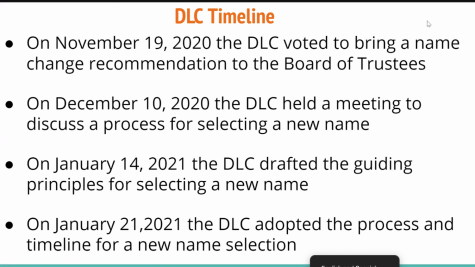Green movement alienates working class, people of color
Black children poisoned in Flint, Michigan; inner-city residents dying from heat waves; Poor infants irreparably harmed by the lead paint flaking from the walls of their aging homes: these are the faces of the people affected by climate change, unseen and unaddressed by the mainstream environmental movement.
Politicians and activists have failed to recognize and address the disproportionate impact that climate change and pollution have on America’s poor and people of color (POC), and in doing so, alienate a substantial part of the American population. If the environmentalist movement of today is to be successful, it needs to march forward with a platform of environmental justice and economic support.
According to The Urban Institute, people of color are much more likely to live under the poverty line. This isn’t disputed. What isn’t widely known or addressed, however, is how pollution and climate change affect low income and POC communities much more than more affluent and white communities. Environmental policies must take this disparity into consideration. If they don’t, they run the risk of ignoring a deadly pattern.
A study conducted by the University of Minnesota and the University of Washington concluded that poorer neighborhoods are more likely to be situated near factories and highways. That alone can be deadly; poor air quality contributes to 63 percent of all deaths caused by environmental factors. Nearly 16.2 million Americans suffer from fuel poverty, the inability to pay for energy services, according to the University of Michigan. As temperatures become more extreme due to climate change, those millions of Americans are at higher risk of heat or cold-related illnesses.
Not only are lower-income communities more likely to be affected by pollution or climate change, but they also have fewer resources to cope with the consequences or fight against those who are doing the polluting.
The environmentalist movement is failing to address how climate change and pollution impacts individuals. This oversight both alienates the working class and people of color, producing legislation that simply does not address the real problems. Instead, they’re pushing a platform that chiefly appeals to affluent white liberals. Images of dying polar bears, while undoubtedly tragic, are simply too far from reality for people suffering from pesticide poisoning in Alabama or choking on the air in Los Angeles. If climate change protesters address how the lives of individuals are affected, then political support for environmental policies will rise.
The solutions pushed out by politicians revolve around changes in consumerism, much of which are financially inaccessible to the working class. Those who struggle to pay their electricity bills every month are not likely to be interested in whether their energy is coming from wind farms or the burning of fossil fuels; they’re only concerned with their budget.. With very little discretionary income, the poor and middle class cannot afford to install solar panels on their roofs.
The failure to address the underlying reasons that lead to people making environmentally damaging decisions, chiefly poverty and lack of education, will only serve to perpetuate this cycle of pollution.
Consider those who cannot afford or have no access to organic and locally-sourced food, and resort to convenient fast food. Their dependence on processed foods emits millions of tons of harmful greenhouse gases from their factories, while also destroying the health of the nation’s poorest people. Policies that work to broaden access to healthy food won’t only improve their health, but will also lessen the impact on the environment.
This is exactly what the environmental policies coming out of the Democratic party and organizations are missing. For example, raising the tax on gas for individual consumers may encourage wealthier people to buy electric cars, but also places an undue burden on the working-class.
Clearly, the extreme partisanship that environmentalist legislation faces delays progress in addressing the issue of environmental injustice. Perhaps today’s legislators should look to the past for guidance; during the first half of the 20th century, environmentalist policies enjoyed bipartisan support. The Clean Air Act of 1970 passed unanimously through Congress, without a single Democrat or Republican voting against it, something which is nearly unthinkable in today’s political climate.
All of this changed a mere three years later, with the financial crash in 1973. During the recession, production jobs started moving overseas, and many working-class workers lost their jobs. We can trace the beginning of the end for this bipartisanship to exactly that. Many environmentalists hailed the shifting of these jobs overseas as a good thing because it decreased pollution in the U.S., without noticing (or caring) about the millions that lost their jobs. The respect that most of America held for these issues dropped because of that tone-deafness and failure to connect with working-class America during that crucial time.
If today’s environmental movement is going to succeed, it needs to learn from this crucial mistake. If politicians and activists continue to ignore an entire segment of the American population, especially the people who actually have to deal with the consequences of climate change, then nothing will improve. It’s time to move away from environmentalism that caters to wealthy white people and implement policies that address the cycle of poverty and environmental damage.







